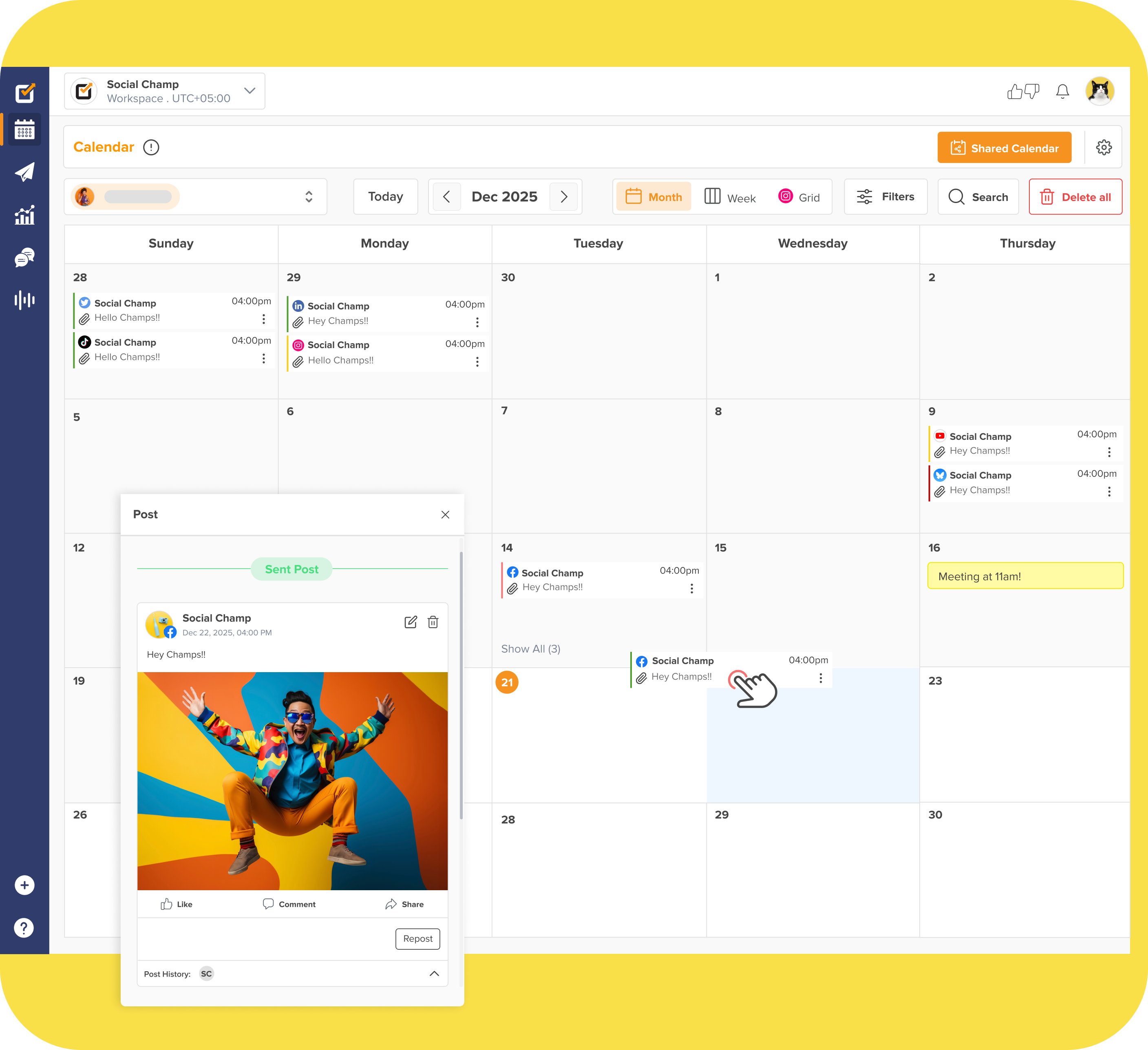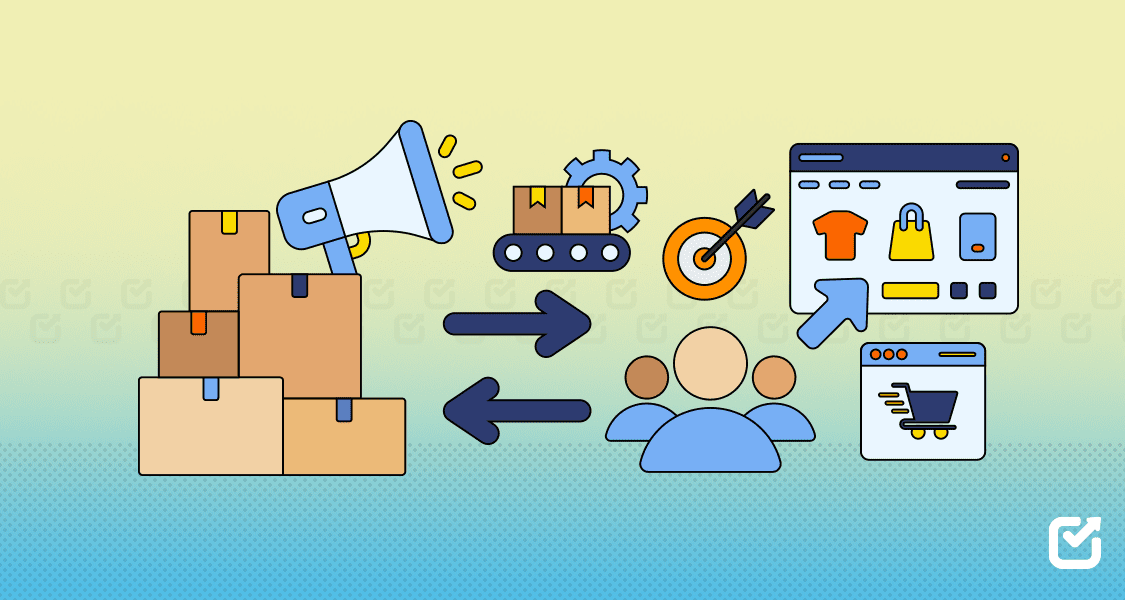Is your brand ready for what’s next in direct to consumer marketing, or are you still using tactics from three years ago? The game has changed.
Today, it’s not enough to run ads and hope for conversions.
Consumers now expect personal experiences, real-time responses, and brands that listen.
And if you’re not meeting those expectations? Someone else will.
According to a McKinsey report, 71% of consumers now expect companies to deliver personalized interactions, and 76% get frustrated when that doesn’t happen.
That’s a problem—and an opportunity.
The question is not if you must change. It’s how quickly you can.
Businesses are using smart DTC strategies to build trust, increase margins, and eliminate the middleman.
If your plan is still about third-party retailers or generic funnels, you’re already behind.
This blog breaks down the strategies paying off now and what you’ll have to do to be ahead of the game in 2025.
Still happy to do what made you thrive in 2021? That’s okay—just be aware someone else will eat your lunch.

Ready to Own Your Direct Consumer Marketing Strategy in 2025?
Stop relying on outdated tactics. With Social Champ, you can plan smarter, post faster, and stay top-of-mind with the audience that matters most.
Short Summary
- Direct to consumer marketing enables brands to own the entire customer experience, from discovery through purchase.
- DTC brands can skip the middleman, providing improved profit margins and direct access to customer information.
- Social Champ schedules social media posts automatically, allowing consistent posting on various platforms.
- Real-time monitoring of engagement within Social Champ enables brands to monitor comments, mentions, and interactions with ease.
- Social Champ offers a seamless solution to scale social presence, conserving time and resources for scaling DTC brands.
- Automated solutions enable DTC brands to engage customers at the best times, boosting overall reach and engagement.
- Direct to consumer marketing is essential for long-term brand ownership, better agility, and better customer relationships.
What Is Direct-To-Consumer (DTC) Marketing and Why It Matters Today
Direct to consumer marketing is more than just skipping the middleman—it’s a business model that places you directly in front of the individuals purchasing your products.
So, what is direct to consumer marketing in 2025?
It’s a targeted method where brands own every point of the customer journey—from product discovery to purchase, support, and retention—without the use of third-party retailers, wholesalers, or marketplaces.
This model has exploded in popularity over the past decade—and for good reason.
The Evolution of Direct to Consumer Marketing
Direct to consumer marketing started decades ago with catalogs and infomercials.
Then came e-commerce platforms, social media, and mobile shopping.
Now, we’re in the age of direct to consumer digital marketing—fast, data-driven, and personalized.
- Early Days: Direct to consumer marketing was slow, offline, and limited to mailers or physical stores.
- 2010s: Shopify, Facebook Ads, and influencer marketing leveled the playing field.
- Today: Brands are utilizing data, automation, and content to fuel growth directly on their own websites and social channels.
Why More Brands Are Going Direct to Consumer Marketing in 2025
This trend isn’t just about following fashion—it’s about addressing actual business needs.
Full Brand and Sales Control
- No longer diluted messaging or lost margins through retailers.
- DTC allows you to set prices, release promos, and control every aspect of the customer experience.
Improved Data, Wiser Decisions
- Access to first-party data (purchases, clicks, behavior) means better targeting and retention.
- DTC brands don’t need to guess what their customers will like—they already know.
More Agility, Less Red Tape
- Brands can release products quickly, try campaigns on the fly, and change direction without retail partners holding you back.
- Ideal for rapidly moving markets and niche audiences.
A successful direct to consumer marketing strategy begins with understanding your audience and having tools that help you move fast.
If you’re still stuck in traditional retail models, you’re giving control—and customers—to your competitors.
Featured Article: What Is a UGC Creator and How to Become One in 2025?
5 Core Benefits of Direct to Consumer Marketing
Still left wondering what is direct to consumer marketing and why so many brands are moving away from traditional retail?
You’re not alone—but if you’re a business or agency seeking to grow, it’s one you can no longer afford to ignore.
Direct to consumer marketing (DTC) is no longer a “nice-to-have” approach—it’s a fundamental engine of profitability, brand ownership, and long-term customer loyalty.
Whether you’re selling skincare, snacks, or software, the DTC model puts you in the driver’s seat.
Let’s break down the real, tangible benefits you gain when you embrace a strong direct to consumer marketing strategy.
-
Higher Profit Margins
How much are you actually earning after the retailers, distributors, and platforms take their share?
With DTC, you retain more of each sale:
- You’re not paying a 30–50% retail markup.
- You set prices, so you can promote products at a discount strategically without damaging your bottom line.
- You can sell products in bundles or offer up subscriptions that generate repeat revenue—on your terms.
In short, direct to consumer marketing allows you to transition from volume-driven sales to value-driven growth.
-
Direct Access to Customer Data
Want to end all the guessing about what your audience needs?
Then stop renting your customer information from third-party sites.
A good direct to consumer marketing strategy provides you with complete visibility into actual, action-based insights:
- You can see who your customers are, what they purchase, how often they re-visit, and where they fall out.
- Segment your audience by behavior and purchase history.
- Customize offers and communication for every customer journey step.
That sort of targeting isn’t pretty—it’s necessary.
With direct to consumer digital marketing, you’re not hoping your message registers. You’re sending it right to the exact audience at exactly the right time.
-
Strong Brand Control
When you go through the channel of retail, your brand often gets lost in the crowd.
In DTC, your brand is completely in control.
- Your website, emails, social media posts, and packaging all reflect your brand voice and messaging.
- You’re not at the mercy of shelf placement, retailer promotions, or third-party reviews.
- You can share your story your way—and build a brand that speaks.
Control is more important than ever, especially in an era where customers demand authenticity and consistency.
-
Personalized Customer Relationships
Today’s shoppers are loyal—only to brands that treat them as unique individuals.
With direct to consumer marketing, you can create deeper, more personal relationships that drive long-term growth:
- Welcome new customers with personalized email messages based on their browse or purchase history.
- Send customized product suggestions or early access to new launches.
- Design loyalty programs that reward actions critical to your business.
These one-to-one interactions are the foundation of contemporary direct to consumer marketing—and they’re what drive repeat visits.
-
Faster Testing, Learning, and Innovation
In retail, introducing a new product might mean months of approval, stocking, and shelf placement.
In DTC? You might try a new offer this week.
- Release limited drops, experiment with pricing, or roll out a new product line in days—not quarters.
- Run A/B tests of email subject lines, landing pages, or ad copy to find out what works.
- Pivot rapidly if something is not working, without having to wait for retail feedback or markdowns.
In today’s market, agility is everything. The brands that win are those that can learn quickly and adapt even faster.
7 Direct-To-Consumer Marketing Strategies That Drive Growth
So you know what direct to consumer marketing is. You’ve got the benefits. Now what?
Winning at DTC isn’t about having a great product or a slick website.
It’s about using the right strategies that resonate with your buyers and convert browsers into repeat buyers.
If you’re creating a serious direct to consumer marketing strategy, these 7 tactics aren’t just useful—they’re crucial.
-
Tell a Story That Feels Personal
Why should anyone care about your brand? What sets you apart from the hundreds of other similar products on the market?
- Focus on your why—founder stories, behind-the-scenes stories, or customer stories.
- Share authentic voices, not scripted corporate speak.
- Use video, social posts, and email to make the experience feel human.
Direct to consumer marketing is most effective when the audience feels like they’re purchasing from people—not a logo.
Check out this behind the scenes video of a DTC skincare brand, showing the manufacturing process of its products.
@yepodaEver wondered how your kbeauty essentials come to life? ✨🫰 Here’s an exclusive behind-the-scenes look! behindthescenes productjourney howitsmade skincareproducts koreanskincare production♬ Soh-Soh – Odeal -
Lean Into Social Media Engagement
Don’t just post—start conversations. DTC brands thrive by being present where their customers hang out.
- Engage on Instagram Stories, Reels, TikTok challenges, or Twitter threads.
- Answer comments, DMs, and mentions as a human being, not a machine.
- Conduct polls, Q&As, or contests to get followers engaged.
If your social media is one-sided, your DTC brand will be background noise.
-
Partner With Influencers Who Actually Fit Your Brand
Not every influencer collaboration is created equal. But the right ones? Life-changing.
- Seek out micro-influencers with engaged audiences, not follower numbers.
- Partner on product reviews, unboxings, or special promo codes.
- Make it real—scripted promos are easy to recognize (and skip).
Savvy direct to consumer digital marketing combines community and credibility.
Influencers make it possible—when selected with care.

A DTC Eyewear Brand Collaborating With an Influencer -
Build an Email List You Actually Use
Social platforms are awesome, but you don’t own them.
Your email list? That’s yours.
- Create lead magnets such as quizzes, promo codes, or early-access offers.
- Segment by behavior (cart abandoners, repeat buyers, etc.) and customize the message.
- Automate welcome flows, product follow-up, and re-engagement emails.
Email isn’t dead. Bad email is. Amazing DTC brands use it to nurture, convert, and retain.
-
Personalize the Entire Customer Journey
No one wants to be treated like customer #4539.
- Use customer information to suggest products, send reminders, or reward loyalty.
- Show dynamic content based on prior purchases or interests.
- Make thank-you messages, order updates, and even packaging personalized.
A personalized experience is what separates average direct to consumer marketing from the kind that builds raving fans.
-
Optimize for Mobile Shopping
A significant portion of direct-to-consumer (DTC) traffic now comes from mobile devices—and if your site isn’t fast and seamless, users are likely to leave quickly.
- Use mobile-friendly layouts, tap-friendly buttons, and intuitive navigation.
- Reduce steps to checkout—make it as simple as shopping on Amazon.
- Provide mobile payment options, such as Apple Pay, Google Pay, or Shop Pay.
Mobile optimization is no longer optional. It’s a central part of every direct to consumer marketing strategy in today’s modern age.
-
Collect and Use Customer Feedback
You don’t have to guess at what customers need. You can just ask.
- Use surveys, reviews, and post-purchase emails for feedback.
- Keep an eye on social media tags and comments for unfiltered opinions.
- Use feedback loops to enhance your product, customer service, and content.
Successful DTC brands learn by listening, not guessing. Your next big idea might be hiding in a customer review.

A Customer Review of a Product of Direct to Consumer Marketing Brand
Featured Article: Facebook Ads for Real Estate: Proven Strategies, Success Stories, and Expert Tips for 2025
Navigating Common Challenges in Direct to Consumer Marketing
Direct to consumer marketing presents amazing opportunities, but it’s not easy.
Although you have more control, you also have to do everything from scratch, from getting people in the door to sending orders and dealing with returns.
Essentially, it’s the complete control of the customer experience.
But with that comes problems. These are the biggest challenges brands encounter—and how to address them.
High Customer Acquisition Costs (CAC)
If you’ve seen your Facebook or Google Ads budget flying out the door quicker than ever before, don’t worry.
Why It’s Happening:
It’s more competition and privacy enhancements (such as iOS 14) that are making targeting less precise and more expensive.
The Solution:
- Build up owned channels such as email and SMS.
- Spend on educating and trust-building content early on in the buyer’s journey.
- Focus on affordable clicks rather than cheap clicks, and high-LTV customers instead of cheap customers.
A strong direct to consumer marketing strategy relies on long-term loyalty, not one-time sales.
Logistics and Fulfillment Woes
Your marketing can be perfect—but if orders arrive late or damaged, you’ll lose trust fast.
Common Issue:
DTC brands often outgrow their fulfillment systems quickly.
The Solution:
- Partner with a reliable 3PL early.
- Keep communication transparent—especially on shipping delays.
- Use automation to keep customers updated on their order status.
Fulfillment is a part of the brand experience. Treat it like it counts—because it does.
Scaling Customer Support
As your DTC brand expands, so does the number of support requests—and quickly.
Challenge:
Too many brands wait too long to scale customer support.
The Solution:
- Utilize helpdesk platforms such as Gorgias or Freshdesk.
- Implement a good FAQ page and chatbot for instant answers.
- Train your team to answer in your brand’s voice.
Support isn’t service—it’s marketing. It can make or break customer retention.
How Social Champ Empowers DTC Brands to Scale Efficiently
Nowadays, staying ahead of the curve takes smart strategies and the right tools.
That’s where Social Champ comes in—a robust tool that streamlines social media management, enabling DTC brands to focus on what matters most.
When you ask about direct to consumer marketing without automation, you depend on manual labor to maintain customer expectations.
Social Champ changes the game by automating social media posting, allowing brands to be easily consistent across platforms.
Automating Social Media for Maximum Reach

Social Champ provides a seamless way to automate your social media strategy.
Here’s how it works for DTC brands:
- Schedule Content in Advance: Schedule posts for the week or month, ensuring they go live at the best times for maximum engagement.
- Consistent Branding: Have a consistent presence on all platforms without the inconvenience of posting manually.
- Cross-Platform Scheduling: Schedule posts on multiple social media accounts from a single dashboard, making it convenient to implement your marketing strategy.
Real-Time Engagement Monitoring

Engagement is vital in any direct to consumer marketing campaign, and Social Champ keeps you on top of it.
It helps you in engaging with your audience effectively by:
- Monitoring Comments and Mentions: Receive real-time notifications of interactions on your posts.
- Respond Promptly: Build customer loyalty by responding quickly and personally.
- Engage Across Platforms: Monitor and respond to engagements on multiple social channels from one place.
Data-Driven Insights to Refine Your Strategy

To be successful at direct to consumer digital marketing, you need to know what is working and what isn’t.
Social Champ gives you robust analytics, so you can:
- Measure Engagement: Track likes, shares, and comments to understand the content that engages your audience most.
- Understand Conversions: Analyze how your posts drive traffic and sales to refine your marketing strategy.
- Optimize for Better Results: Use data to make informed decisions and improve ROI on every campaign.
For DTC brands wanting to scale smartly, Social Champ is not just a tool but a game-changer.
With automated social media planning, tracking engagement, and detailed analytics, Social Champ keeps you ahead of the curve in an ever-more competitive market.

Ready to Outpace Your Competitors?
Social Champ lets you automate, engage, and scale your direct to consumer marketing easily. Don’t wait for your competitors to get ahead—start now!
Conclusion
As the direct to consumer space keeps growing, it’s obvious that success is not just about having amazing products.
Brands must own the entire customer experience—from discovery to purchase—and use the right tools to maximize every touchpoint.
That’s where platforms like Social Champ step in, enabling DTC brands to optimize their operations and scale successfully.
With Social Champ’s automation features, real-time engagement tracking, and robust analytics, businesses can manage their social media presence while gaining valuable insights into what is fueling growth.
Direct-to-consumer brands have the best chance of building deeper customer relationships, increasing profitability, and constantly innovating.
Social Champ helps brands overcome marketing challenges today, ensuring each strategy is carried out flawlessly.






